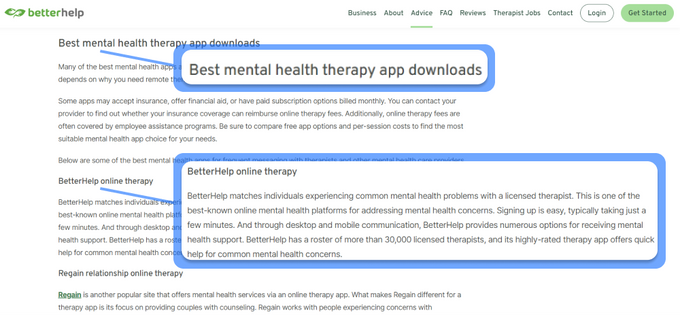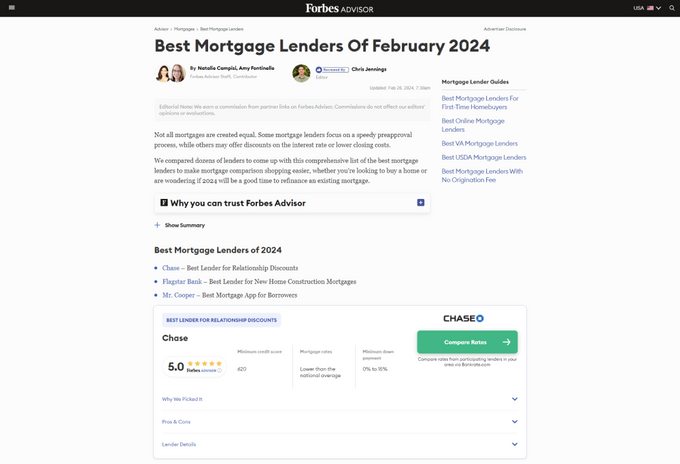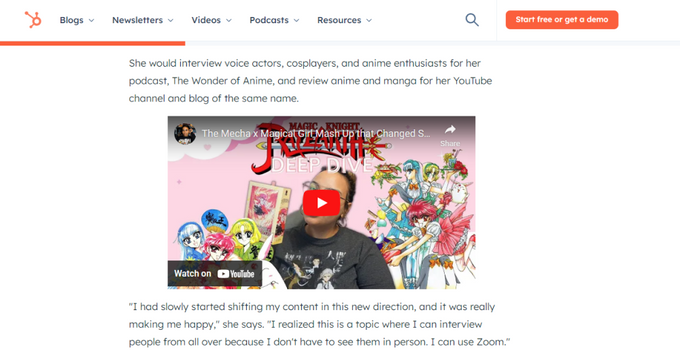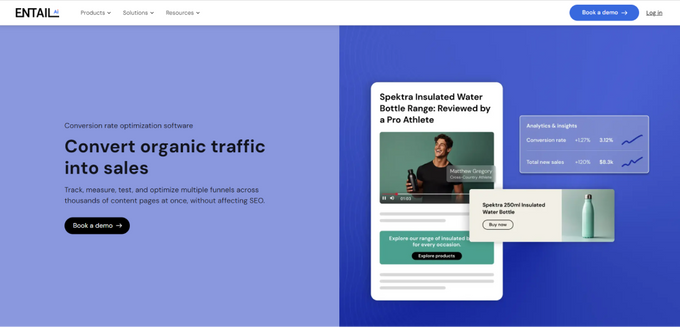Bottom-of-the-funnel marketing: Essential strategies and metrics for conversion
Understand how bottom-of-the-funnel content leads to conversions and how you can optimize it to guide customers to take action.
Updated April 28, 2025

Have you ever gone down an internet rabbit hole starting with a simple Google search, only to end up on a company's website ready to whip out your credit card? From that initial search to the final purchase, you've been led down the content marketing funnel.
The funnel maps out the stages every customer goes through on their journey with a brand. It starts with awareness at the top, narrows through engagement in the middle, and ends with driving conversions at the bottom.
Meeting customers at the BOFU and guiding them to happy purchases is both an art and a science. Let's explore how to master it.
What's in this guide
- The purpose of the conversion funnel
- Guiding customers to the BOFU
- Best practices for the bottom of the funnel
- Common types of BOFU content (+ examples)
- Metrics to measure BOFU performance
The purpose of the conversion funnel
The goal of any content strategy is to move prospects down the funnel by creating value and meeting their needs. At the top, content raises brand awareness and attracts an audience. In the middle, content educates and nurtures leads. At the bottom, content aims to convert leads into customers and promote loyalty.
Content creation, optimization for search engines (SEO), and promotion on social media make the funnel work. But, the final funnel stage is all about driving customer actions and decisions. BOFU content convinces leads that your product or service is the right choice over competitors.
» Learn how to perfect every stage of the SEO conversion funnel.
Guiding customers through the BOFU stage
As we mentioned before, the bottom of the funnel is where prospects or leads convert into customers. For instance, an e-commerce store's bottom of the funnel might involve someone purchasing their products, while a SaaS company may consider actions like scheduling a demo, becoming a qualified lead, or closing a deal as the end result.
» Explore winning content marketing strategies for e-commerce.
This means that your BOFU content and other strategies should target prospects who are close to making a purchase decision. Additional goals at this stage include:
- Convincing leads to buy
- Promoting customer retention
- Generating loyalty and advocacy
Effectively guiding customers to the bottom of the funnel starts with getting to know your audience. You can find out which users are ready to buy based on behaviors such as search intent, time on site, page views, and lead score. At Entail, we consider search intent to be the most useful.
Understanding audience search intent and expectations is crucial when creating content. Search behavior provides insight into the type of content users want for different queries.
Let's use BetterHelp, an online therapy company, as an example.
At the top of the funnel, people are interested in general topics related to your business, such as "Why do people get depressed?" This is where you can start to create content with the purpose of generating brand awareness.
At the mid-funnel stage, people are more interested in specific topics related to your business, such as "Does online therapy work?" They are not ready to make a purchase or book a session yet, but they are getting closer.
At the bottom of the funnel, people are ready to take action, such as booking a session or making a purchase. Someone looking up "best online therapy for men" or "couples therapy sign up" indicates they've reached the bottom of the funnel since they show clear interest in the service.
This interest can come from discovering the topic via social media or actively seeking information on Google.
Pro tip
Focus on creating high-quality content based on keywords that indicate a readiness to convert. For example, BOFU keywords for a hypothetical website builder called "Web Wizard" would include "Web Wizard vs. Wix," "Web Wizard review," "Web Wizard pricing," and even "Wix alternatives."
Best practices for the bottom of the funnel
1. Establish topical authority at every stage
Brands should strive to become authorities in their industry by creating consistent, high-quality written and video content related to their field. This means doing more than just relying on paid traffic and building topical authority through organic channels instead.
READ MORE: The 5 stages of the marketing funnel explained
2. Identify and focus on bottom-of-the-funnel topics
Topics that are the most relevant to your brand and are at the bottom of the sales funnel should form the foundation of your content strategy. Even though most of them are highly competitive, creating content around these topics is essential for building topical authority, improving search rankings, and increasing visibility and conversions.
3. Prioritize video content
At Entail, we understand that most users prefer video content over text, which is why we always recommend adopting a "video first" approach. Create short-form videos for platforms like TikTok, alongside the regular written content you have planned for your website.
4. Tailor your content to your audience's search intent
Understand the type of content that audiences expect to find when searching for specific BOFU queries or interests. Whether it’s comparison pages, review pages, or video tutorials, aligning your content formats with audience expectations can significantly enhance engagement and effectiveness.
5. Experiment with mixed content formats
Consider combining video with text to structure content more engagingly and effectively. This approach not only caters to the diverse preferences of the audience but also leverages Google’s preference for helpful, reliable content, enhancing visibility and authority in both search engines and social media platforms.
» Learn how to leverage your expertise in social media and video.
Common types of BOFU content (+ examples)
BOFU content is targeted to customer needs and focused on converting leads. Your content should contain key information that addresses buyer concerns, compares your product to competitors, and explains its benefits—all in an effort to close the sale.
- Demos: Interactive content that shows how a product works and allows prospects to experience key features.
- Landing pages: Focused pages that encourage visitors to convert and take action, like sign up, download, or buy.
- Testimonials: Quotes from satisfied customers build trust and social proof.
- Case studies/customer stories: Details a customer's problem and how the product solved it, which helps build credibility.
- Competitive analysis: Compares product with competitors on key factors like price and features.
Metrics to measure BOFU performance
Social media metrics that measure engagement and SEO metrics such as impressions and clicks are great for monitoring your brand awareness, but you need to keep a close eye on the bottom of the funnel, too.
Key metrics at this stage of the funnel include:
- Customer lifetime value (CLV): Revenue generated from a customer throughout the relationship. Maximizing CLV should be your top goal.
- Return on investment (ROI): Measures profit earned versus the cost of content and tracks how content contributes to the bottom line.
- Cost per acquisition (CPA): Cost to acquire each new customer. Lower CPA indicates greater efficiency.
- Conversion rate: Percentage of visitors who convert.
Monitoring these metrics enables data-driven decisions about BOFU content so you can double down on what converts and cut what doesn't work.
» See which SEO KPIs you should be tracking in 2026.
Drive customers to take action
The bottom of the funnel is the final yet most critical step in the customer journey. Creating targeted content and measuring performance drives conversions and sales while ensuring customer loyalty.
With a strategic approach, you can guide leads to becoming satisfied and even returning buyers.
FAQs
What is the end of the marketing funnel?
The end of the marketing funnel corresponds to the bottom-of-funnel (BOFU) stage, where prospects have reached the decision stage and are considering making a purchase.
Why is bottom-of-the-funnel content important?
Investing in the bottom of the funnel is crucial since it's the last opportunity to influence a prospect's decision before they either convert or leave the funnel. Additionally, a strong bottom-of-funnel strategy can positively impact the entire marketing funnel by increasing the effectiveness of top- and middle-of-funnel activities
Is customer retention really valuable?
Customer retention contributes to increased revenue and profitability, fosters loyalty, reduces costs, and provides long-term benefits. It's essential for companies to strike a balance between customer acquisition and retention efforts to ensure sustainable growth and success















